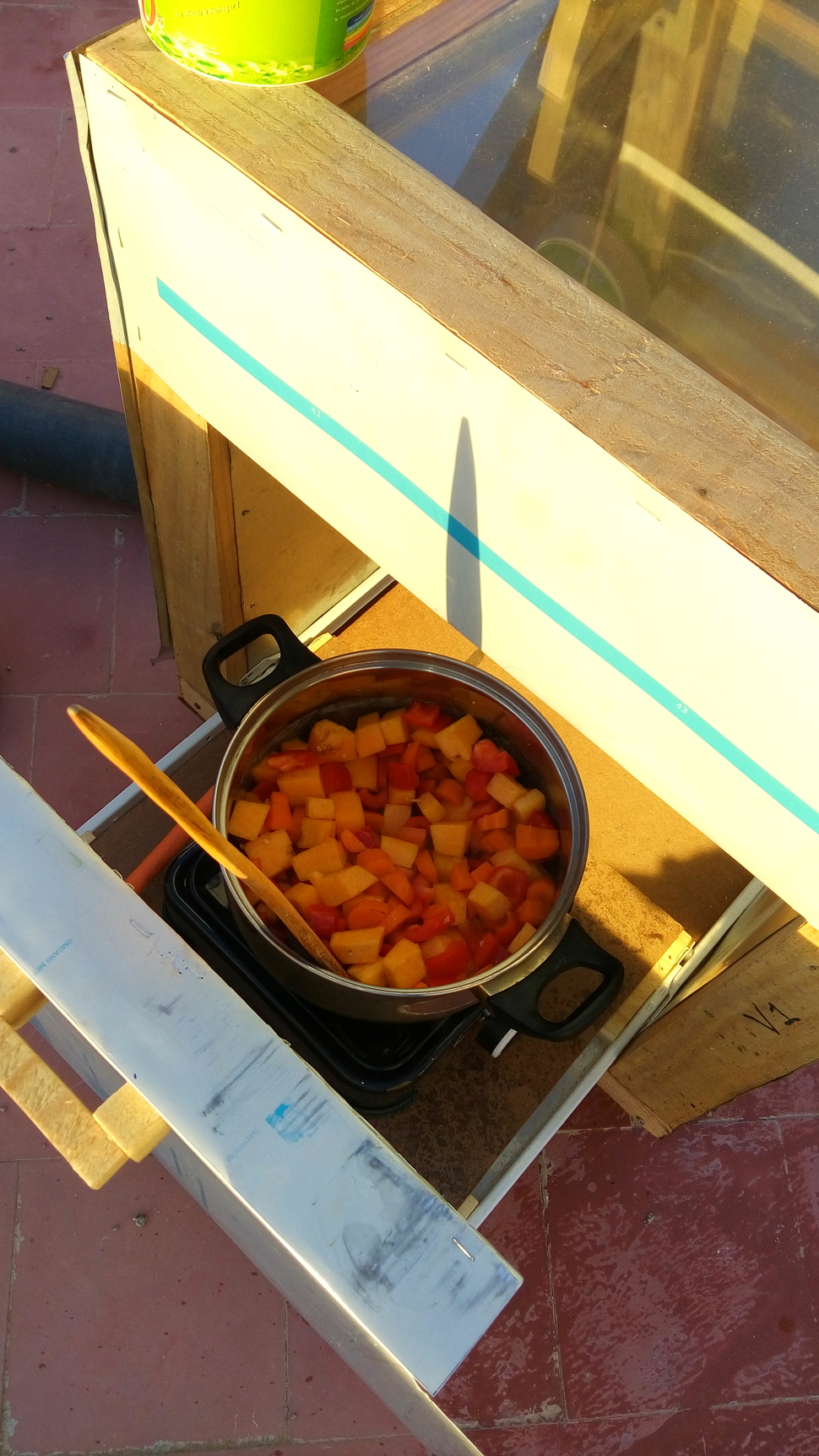General information
All tests are executed with 2 litres of water.
All calculations are made with the specific heat of water, which is 4200 J/Kg/K.
The used formula is: c (specific heat) × V (volume, in litres) × ΔT (temperature difference) / t (time, in seconds).
The following calculation estimates how many Watts, energy provided by the sun each second, the Fortune Cooker should be able to absorb during the winter.
We assume that sunlight has an intensity of 1000 W/m2 (Ternary.eu, 2016). This is approximately the intensity of the sun in the summer in the Netherlands, so the sun intensity in Morocco should be at least this intensity, also on cloudy days.
According to the Solar Electricity Handbook (2016), the average sunlight intensity in December is less than twice as low than in June, considering the Fortune Cooker is a solar panel optimally adjusted to the sun. Thus, the sun radiation would reach around 500 W/m2 in December.
The glass surface is 0,39*0,33 = 0,132 m2. This comes down to 500*0,132 = 66 Watts.
Taking heat loss through the glass and cracks into account, estimated at 20%, 52,8 Watts remain. This is the number that could theoretically be reached with the prototypes. If not, the design of the prototype or the used pan is not sufficient to meet its technical demands and therefore should be adapted.
HEAT INPUT
Test 1
Start time: 11:30
Results
Temperature increase 14 Degrees Celsius
Amount of time needed 7260 seconds
Watts received 16,2 Watt 4200 × 2 × 14 / 7260
Test 2
Start time: 15:07
Remarks: There was a lot of wind, the sun was already quite low on the horizon and the outside temperature dropped from 20,5 to 16 degrees while testing.
As the sensor of the data logger was not accurate anymore, a normal thermometer was used, so less intervals are measured and only the temperature of the water in the pan.
Results
Temperature increase 4 Degrees Celsius
Amount of time needed 5400 seconds
Watts 6,2 Watt 4200 × 2 × 4 / 5400
Test 3
Start time: 11:23
Results
Temperature increase 6 Degrees Celsius
Amount of time needed 2970 seconds
Watts 16,97 Watt 4200 × 2 × 6 / 2970
Heat input of prototype 1:
The maximum amount of input is around 17 Watt.
HEAT LOSS
Test 1
The temperature sensor was not reliable. As a result we cannot draw any conclusions to the first tests, these are therefore excluded. In test 2, normal thermometers are used.
Test 2
Start time: 13:39
Results
Temperature decrease 30,5 Degrees Celsius
Amount of time needed 6077 seconds
Watts 41,67 Watt 4200 × 2 × 30,5 / 6077
Heat loss of prototype 1:
The heat loss is around 42 Watts
Conclusions on the technical results of prototype 1:
The warmth input of around 17 Watts is far lower than the aspired calculation of 52,8 Watts. The use of a shining pan might have been the cause, which means it reflected the heat back to the box instead of absorbing the heat into the water. The heat loss of 42 Watts is relatively low, so the insulation is considered good enough. However, the warmth input of 17 Watts does not compensate the 42 Watts that is lost.
Therefore the prototype does not meet the requirement to compensate the loss of warmth, by using solar energy. Thus, the prototype is unable to absorb enough heat from solar radiation. It is not yet possible to point out which aspect(s) causes this lack of heat absorption. Also, the prototype might have to many cracks that worsen the insulation of the box, which means it does not meet the requirement to be fully closable.
